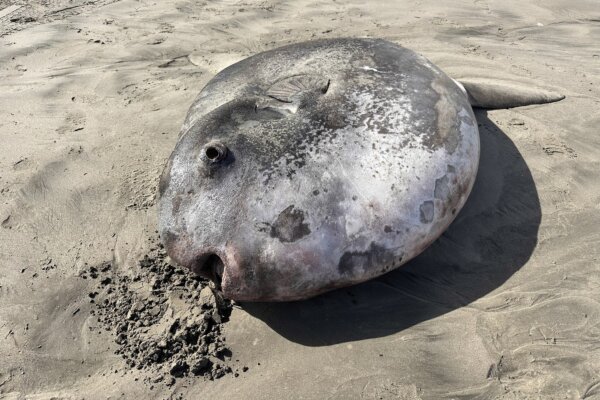
A rare hoodwinker sunfish, typically found in temperate waters in the southern hemisphere, has washed up on the northern coast of Oregon, attracting curious onlookers to the beach in Gearhart.
Measuring 7.3 feet (2.2 meters) in length, the massive fish was first spotted on June 3 and remained on the beach as of Friday, according to the Seaside Aquarium. Due to its tough skin, it may stay there for weeks, as scavengers are unable to puncture it.
Photos shared by the aquarium show a large, flat, gray fish lying on the sand, giving a sense of its impressive size. This unusual sighting has caused a stir on social media, leading a researcher from New Zealand, Marianne Nyegaard, to confirm that it is indeed a hoodwinker sunfish, a rarer species compared to the more common ocean sunfish.
In 2017, Nyegaard’s research revealed that the hoodwinker sunfish, also known as Mola tecta, is a distinct species from the ocean sunfish, Mola mola. The name “tecta” in Latin means hidden or disguised, emphasizing how this new species had gone unnoticed for so long.
Despite being traditionally believed to inhabit only the southern hemisphere, hoodwinker sunfish have also been found washed ashore in California and Alaska in recent years, challenging previous assumptions. It is possible that such fish have also been mistaken for ocean sunfish in other parts of the Pacific Northwest in the past.





